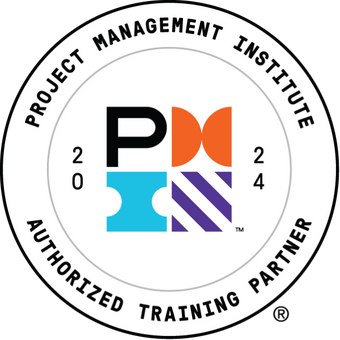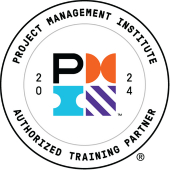Disciplined Agile SCRUM Master (DASM)® – 2 days, 14 PDUs
DASM Course Overview & Benefits
Disciplined Agile® Scrum Master is a nine-lesson, instructor-led course that shows students how to use Disciplined Agile to improve WoW.
In just two days, students will become familiar with the foundational agile and lean approaches that Disciplined Agile supports, use the Disciplined Agile tool kit to solve problems and learn how to build high-performance teams. The Disciplined Agile tool kit includes hundreds of proven project management practices (including Scrum, Kanban and SAFe® ) and puts them into context.
This engaging and interactive DASM course will prepare students to take the Project Management Institute (PMI)® DASM certification exam and, equally important, start using Disciplined Agile immediately.

DASM Certification Exam Prep
This course provides excellent preparation for the PMI DASM certification exam. DASM certification equips project managers to successfully lead agile teams. As agile becomes the go-to approach for many organizations and industries, project managers need to demonstrate knowledge, skills and experience in this area.
Upon completing this DASM certification training course, candidates will be eligible to sit for the exam which must be taken within 60 days of application. The Scrum Master DASM exam is non-proctored and administered online through Pearson VUE. Upon successful completion, the candidate will receive a badge and certification, which is valid for one year.
Who can take this DASM course?
This course is for project managers who wish to gain a DASM certification or anyone who wishes to learn Disciplined Agile principles. This course is ideal for teams that want to work together to learn Disciplined Agile and customize their WoW.
There is no prerequisite to take this course. It is appropriate for people who are new to agile, though some basic familiarity is helpful.
Learning Objectives
- Describe the significance of the Disciplined Agile Mindset
-
- Define Disciplined Agile and its principles, promises and guidelines
- Describe how Disciplined Agile is an agnostic hybrid of approaches that leverages strategies from a variety of sources
2. Describe what business agility is and how it is core to the value proposition of Disciplined Agile
-
- Define business agility
- Identify the full range of business agility
-
- Recognize the importance of making Delight Customers a priority
- Describe how Being Awesome is important for building a great agile team
- List the five levels of awareness (Enterprise Awareness)
- Identify how different contexts require different strategies—teams need to be able to own their own process and experiment to discover what works in practice (Choice Is Good)
- Identify how Disciplined Agile provides guardrails to make better process choices, not strict rules that may not even be applicable (Pragmatism Over Purism)
- Identify the potential factors to consider regarding the context of a given situation faced by a team (Context Counts)
- Identify the large number of strategies the Disciplined Agile tool kit supports to Optimize Flow
- Explain the importance of organizing around products/services
-
- Agile life cycle
- Lean life cycle
- Continuous delivery agile life cycle
- Continuous delivery lean life cycle
- Exploratory life cycle
- Program life cycle
- Business agile and business lean life cycles
-
- List the five steps for choosing your WoW
- Analyze a team’s context using the spider chart
- List factors impacting context when choosing a team’s WoW
- Select the best-fit life cycle using the decision tree
-
- Compare and contrast agile and waterfall
- List the benefits of being agile
- Outline the agile iterative way of working
- List and define the artifacts and ceremonies of agile
-
- Compare and contrast leaders to managers
- Identify roles that can be leaders
- Describe potential, primary and secondary roles on Disciplined Agile teams
-
- Explain what it means to be goal-driven
- Define process blades and how they are used inside Disciplined Agile
- Describe the purpose of a goal diagram
- Describe how to read a goal diagram
- Describe the process goals of DAD
- Rank and select process goals according to their relevance to the phase and the team’s context
- Identify key practices for the team try using goal diagrams
-
- Describe agile techniques and ceremonies relevant to Inception
- Define user stories
- Describe how to write and estimate a user story using different techniques
- Identify acceptance criteria and the definition of done
- Indicate how to plan iterations effectively
-
- Describe agile techniques and ceremonies that take place during Construction
- Describe how to demonstrate an iteration
- Understand how to obtain and receive feedback
-
- Describe how lean takes a system view rather than a team view
- Contrast lean aspects of knowledge work with work in the real world, including sources of waste and delay
- Describe aspects of regular work that affect quality and efficiency, including sources of waste and ways to improve
-
- Identify the causes of waste and delays
- Describe how to minimize waste through value stream mapping
- Describe the push and pull methods of moving work
- Describe the Kanban approach to managing work in process
- Explain how to build and validate quality into the delivery process
-
- Explain cost of delay
- Describe how to realize value
- Explain the importance of delivering incrementally
- Contrast MBI with MVP
-
- Define “standard work” and its use as a baseline for continuous improvement
- Explain the benefits of explicit workflow
- Describe how to use Kaizen loops and PDSA techniques for continuous improvement
- Define the options for cross-team learning: “community of practice” and “center of excellence”
-
- Describe how resiliency supports lean thinking
- Explain when to build workflow according to resiliency outcomes


